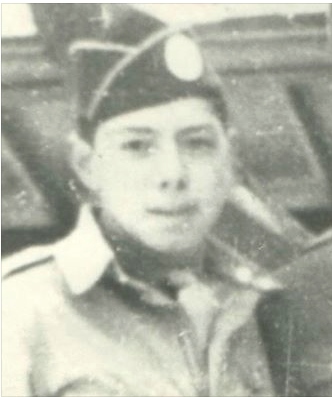In Memoriam of WWII Latino Veterans and Their Families
Thank you to all of the veterans who have courageously served our country. This post is dedicated to my tía Minnie Cadena who recently passed and was a participant in the University of Texas Voce Oral History Project and my tío John G. Reyes who was KIA 1944.


This post is also dedicated to the all of the Heilig, Scott, Vasquez and Cadena who have served our country bravely.
In a new chapter we honor the memory of Latino veterans and their families. This chapter was recently published in the new book Latina/os and World War II: Mobility, Agency, and Ideology.
The citation for our chapter is:
Rodríguez, A. A., Vasquez Heilig, J. & Prochnow, A. (2014). Higher Education, the G.I. Bill, and the Post-War Lives of WWII Latino Veterans and Their Families. In M. Rivas-Rodriguez & B. Olguin (Eds.), Latina/os & World War II: Mobility, agency and ideology, Austin, TX: University of Texas Press.
Higher Education, the G.I. Bill, and the Post-War Lives of WWII Latino Veterans and Their Families
In 1897, a federal district court in Rodriguez v. Texas declared that the Treaty of Guadalupe Hidalgo, and subsequent federal policies, conferred upon Mexican Americans a “White” racial status for naturalization and classification purposes. Thus, despite the “separate but equal” decision in Plessy v. Ferguson, Latina/os should have had equal access to the same public schools as Whites. However, racial bias was pervasive. Mexican American “greasers” faced cultural prejudices analogous to the racial animus suffered by African Americans, with several high profile lynchings, and city governments like Houston actively encouraging repatriation during the Great Depression.[i] Professor E. E. Davis of the University of Texas, asserted in a 1923 publication that White American children did not want to attend school with, “the dirty ‘greaser’ type of Mexican child,” and should be required to do so. Instead, Davis advocated that Mexican children be placed in separate schools until they were able to contribute positively to society.[ii] It is within this context that we will explore the experiences of Latino WWII veterans in U.S. schools pre- and post- war.
This chapter begins by briefly reviewing established scholarship on the structural racism that Latina/os faced in the U.S. educational system. It then describes the elementary and secondary educational experiences of several Latino veterans from The University of Texas WWII oral history project database. We conclude with profiles of three WWII Latino veterans derived from follow-up interviews[1] that focused specifically on their higher education experiences pre- and post- war. Little has been written about the lived experiences of Latino veterans who returned from service to enter the hallowed gates of the academy. We ultimately show the survival heuristics and pathways to success of several Latino veterans despite living in the midst of racism within the broader society.
Latino Education in the World War II Era
The highly racialized educational contexts that denigrated the culture, heritage, and language of Mexican Americans was evident through the system of schooling in Texas, California and other states where large concentrations of Latinos were living. World War II ushered in a new era of American society, one with increased economic prosperity and with new educational possibilities to some Latinos who previously would not have had the opportunity to participate in secondary schooling and beyond.[iii] In 1944, President Franklin D. Roosevelt signed into law the Servicemen’s Readjustment Act, known colloquially as the G.I. Bill (P.L. 78-346, 58 Stat. 284m). This Act provided a path for WWII veterans to access higher education, an institution that was once the playground of the rich.[iv] Created as a measure to inoculate the U.S. from another financial disaster, as when World War I veterans returned to the home front with a “$60 allowance and a train ticket,”[v] the G.I. Bill, unexpectedly, helped create a highly educated citizenry, and a powerful economic and technologically advanced society.[vi]
Of those impacted by the passage of the G.I. Bill were African American, Latino, and low-income servicemen in general, students who otherwise would have had little chance of accessing higher education. Provisions of the G.I. Bill had the United States government provide financial assistance for tuition, fees, books, and supplies, as well as a stipend, for WWII veterans to pursue their education,[vii] reduced the “opportunity costs” of attending higher education.[viii] Research has demonstrated the African American veteran participation in higher education due to the G.I. Bill helped create a Black middle class[ix] and increased civil participation, including Civil Rights Era activism.[x]
Early Education Experiences of WW II Veterans
Many Latinas and Latinos of the World War II generation attended segregated schools where they faced prejudice and limited educational opportunities. Several veterans recounted the difficult environments in which their elementary CONTINUE READING: In Memoriam of WWII Latino Veterans and Their Families | Cloaking Inequity

